Willing to grow your business high on the success ladder?
Well, then you need to think out of the box. Your website is the mirror of your business or brand. So, ensure that your business website is highly attractive and responsive.
In today’s highly competitive marketplace, you need to ensure that your website ranks high in search results.
Well, in this case, SEO comes into play. Being one of the most reliable sources for generating traffic for websites, it’s being highly used. Search Engine Optimization (SEO) is an extremely fruitful practice and helps in upholding and boosting your business in the best possible way.
SEO is one of the hot topics on the world wide web. You just can’t deny the fact that SEO tips are highly actionable and can help your business grow faster.
These very simple SEO techniques can definitely make a significant difference in making your business a successful one.
Just like time, Google stands still for no one. There are many changes in the Google algorithms and you need to have a clear idea of them. So, make sure to stay updated with latest SEO tips that can actually work wonders for your business.
Here, in this guide, we will be discussing some of the top professional SEO tips for ensuring your website to rank better in Google search results.
Short URLs rank better
Optimizing the length of your URL is a marketing practice that should definitely be considered. Make sure to only use short URLs as the short ones rank better than long URLs.
A URL should generally have 70-80 characters, as shorter the URL, better will be the results.

Use title tag modifiers
You just need to add modifiers to your title tags. Some of the most commonly used ones are “the current year”, “best”, “review”, “free shipping” and “checklist”. So, with the help of this technique, you can easily optimize your title tags.
Adding modifiers to a blog title also helps raising the CTR (Click Through Rate) of that webpage as users find it more promising than a regular title.
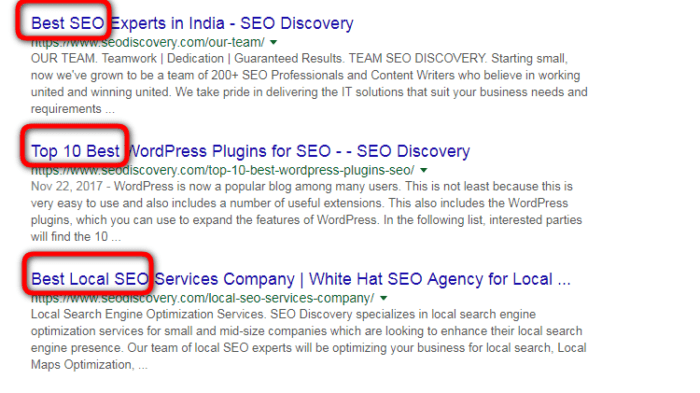
Page Titles
You may have seen the page titles are visible at the top of the web page when you open it. The search results are displayed by their titles which helps the Google bots to analyse the page. Ensure you have kept your descriptions small and relevant.
Use keyword rich URL
The very first thing that a user sees is the URL, and the rank of your page and website highly depends upon the URL. The easier the URL, the easier it gets for spiders to crawl the website. Ensure your keywords are short and contain in URL. It is a healthy marketing practice to optimize the URL length and use shorter ones for better ranking. Ensure the URL contains 70-80 characters.

Broken link building
There are many good ways to build links, but broken link building is one of the best one among them. Being one of the most effective white-hat link building strategies, it’s being highly used.
It includes identifying broken links on the site you want get links from. Then hunt for a piece of content that can prove out to be a great replacement for the broken link.
Furthermore, let the site owner know about their broken link and offer them with a new substitution.
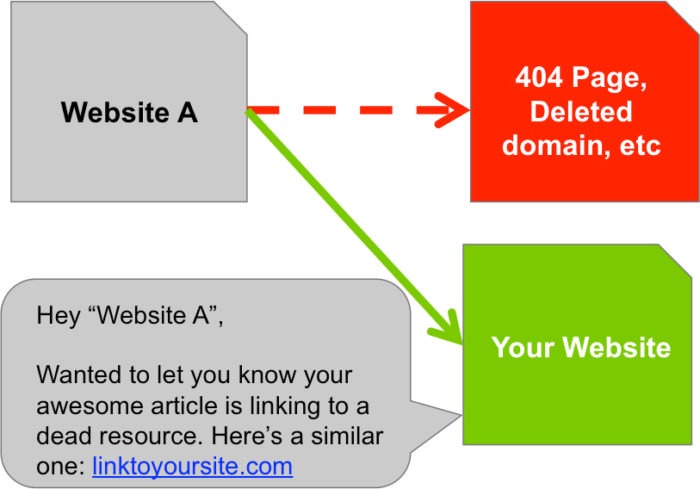
Delete under-performing pages
Adding low quality and no value pages to your website can waste enough of your resources.
You won’t get any traffic from such web pages, so it’s better to remove them. Having lots of under-performing pages on your website is bad for SEO.
So, ensure to eliminate the ones that don’t bring in any traffic. This way, your remaining pages can rank better on Google.
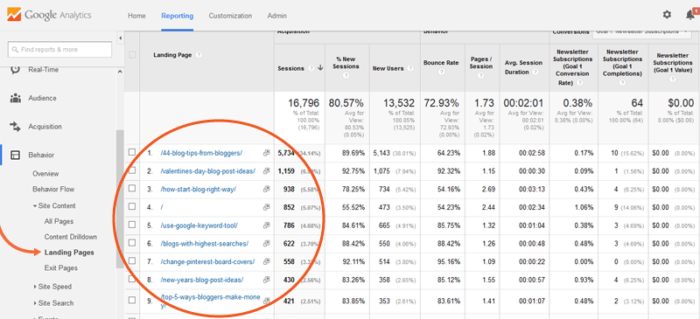
Do well- keyword research
Ranking high on Google is not rocket science if you follow the right tips. Keyword research is an important part of this method where you need to create a less competitive keyword list.
If you look for a certain keyword on Google, the first page of the internet will bring out all the pages having connection with that particular keyword. Keyword placement and its research hold an important place in making your website rank higher in Google. Keywords should be related to the search queries that users often search on Google. Ridiculous stuffing of keywords can lead to ignorance of your site by the Google crawlers or spiders.
One of the best ways to do keyword research is to find the keywords that have less competition and high search volume. Google offers some free tools like Google keyword planner where you can research your keywords. Look at tools like SEMrush and Uber suggest for a decent beginning stage.
Choose keywords with strong commercial intent
Commercial keyword intent are search terms used by people who are ready to avail services and the ones who are searching for a given keyword will buy from you.
Moreover, you can easily plan your keywords using Google keyword planner and that too with a strong commercial intent.
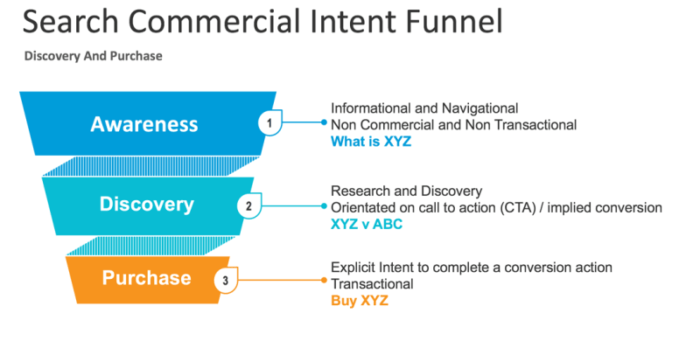
Use Reddit and Wikipedia for keyword research
Reddit and Wikipedia are well known as keyword research gold mines. You just have to type a topic or a keyword into the Wikipedia.
The anchor texts present over there can prove out to be a great topic or keyword ideas. Moreover, table of contents can also reveal some of the amazing keyword ideas.
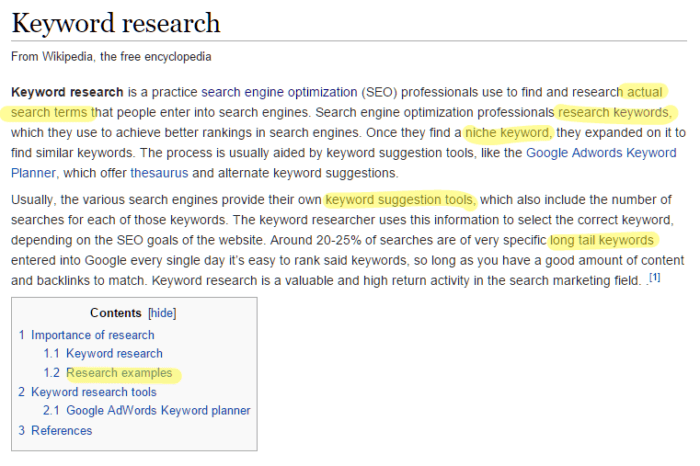
Build quality Links
Link building is an essential factor in ranking your website, business, or any page on Google. Quality external and internal linking boosts your website’s ranking system. Ensure that your website has quality links related to your niche, and if you have built quality links relevant to your website niche, Google will authenticate and promote your website content
The more internal links you use, the more visibility you will get in the eyes of search engines. You need to increase the number of authoritative links that will point towards your website.
There are some effective strategies for doing so. These are as follows:
- Continuously promote the quality content on social media sites
- Do more and more guest blogging.
- Level up your social media marketing.
- Write highly valuable and engaging content for your target audience.
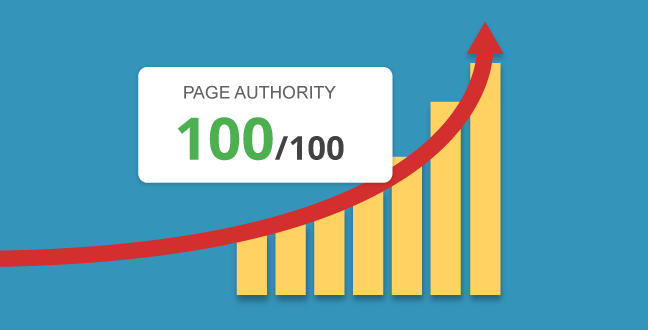
Publish Long form content
Longer content tend to rank better than the shorter content. Yes, people do have a short attention span, but that completely goes against the idea that people can’t read longer content online. However, the ideal length of content for being published is 1900 words.
You need to include your target title tag into keyword. This way you can boost your CTR which will, in turn, help you to get more traffic without needing high rankings. If you double your CTR, your traffic will gradually boost up. When there are a lot of clicks on your page, it’s clear that this is reliable and is a great result for this keyword.
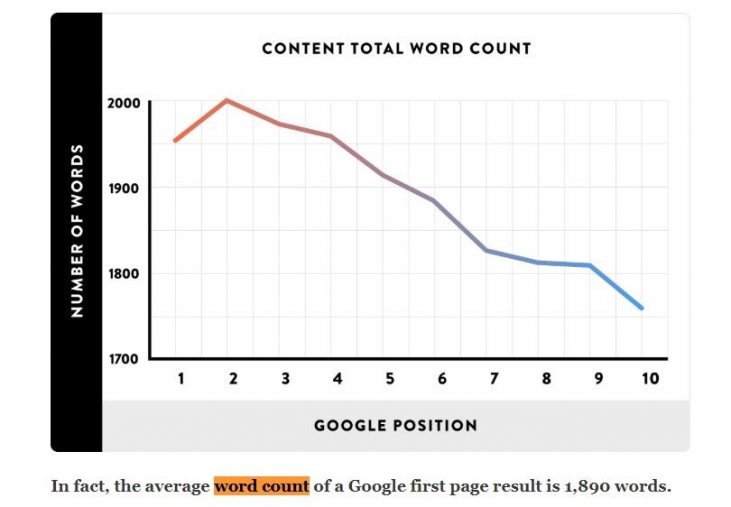
Mobile optimized
Google always prefers to rank websites that have an incredible user experience. The more mobile optimised the website is, the more are its chances of getting ranked. The new update of mobile-friendliness has brought a lot of changes in the website rankings. As per the new update of Google, it prioritizes mobile-friendly websites. You can check the responsiveness of your website on mobile phones by testing it on Google’s free mobile-friendly test. Almost all users access websites on their mobile phones, thus it is crucial to have a responsive website. Also, till the year 2025, nearly 73-74% of users will use their mobile phones to access the websites. This Report has been submitted by SEMRUSH.
Featured snippet
Featured content or snippet is that quality content that gets featured on the top of Google. While writing the content, Google chooses to promote the one that seems relevant and engaging. The content displayed on the search snippet is the one that ranks on the SERP. page.
There are some ways to feature your content. Have a look below
- Write your content in a systematic and organised way.
- Use engaging and eye-catchy headlines and images.
- You can start with catchy questions.
Utilize Google’s search console
Google provides many free SEO tools, which you can use to examine your website and fix mistakes. Among all the free tools, there is another tool called Google console previously known as Google webmaster. Using Google console helps you to understand which web page is indexed and which has issues. It even tells you the number of clicks you get on your webpage.
Make online relationship
Building online relationships helps in getting ranked on Google. The more quality your content has, the more it gets shared across the web. The higher rank depends on the amount of publicity you get. You can see a huge spike in your traffic when your content gets engagement and huge publicity.
Technical SEO
Technical SEO problems can really hamper your website rankings and they are worth paying attention to. Technical SEO is not a rocket science, you just need to check whether your website is 100% mobile optimized.
Also, check the average page speed of your web pages. The technical SEO also includes checking whether the site is secure which means it is secured with SSL. You must remove the broken pages and links if you want to rank your website in Google.
Use optimized images
The most prominent thing is to use images that are optimised and relevant to your article. Use images that are of high-quality and make sure to make it easy for bots and spiders to crawl your site. You can do this by using images on your site maps and using alt text. Alt tag helps the crawlers to know about the image context.
Keep checking your rankings
Keep a check whether there is a change in your rankings or not. If not then you are still making mistakes. Try to improve all the points mentioned above. You need to check the bounce rate of your website and try to reduce that. If you are working hard with your SEO techniques, keep chasing whether your hard work is paying off.
Mastery over the basic SEO tips
To rank higher on Google it is crucial to master the basic on-page SEO. Once you have created a base by optimising the page, it gets easy to start further with more steps. Making a strong foundation of on-page SEO means now you can focus on the other useful elements like URLs, meta descriptions, titles, H1, H2, and many other things. In setting a strong foundation of on-page SEO, it is necessary to focus on a clear and intuitive layout and clear navigation. The most effective tip is the use of keywords.
Bonus Tips: Create an SEO Strategy That Converts
#1. Choose the pages you want to optimize and promote.
Search engine marketing can be more valuable than you think, especially in aggressive niches (like certified businesses, insurance, real estate, weight loss, and more.). Green and profitable SEO techniques depend on your proficiency to prioritize. So start by selecting just a few pages for advertising and optimization.
However, the question is what are those pages? The pages referred to here in depends on your industry and experience. For example, if you’re running an e-commerce company, your focus should be on the best products. If you’re a service business, choose top supplies and services. If you’re a clinic, choose the procedures that are popular. And so on.
A key point to reflect on here is the effectiveness of the pages you choose in searches. For example, if you want to promote and optimize two service pages but have the funds for one only, then choose the page that already has higher ranking.
Attempting to promote all pages in one go is ineffective. As a digital marketer, you may have limited time and resources, so your focal point should be targeted pages and not all. Boost the rankings of your key pages to significantly improve your website’s SERPs.
#2. Conduct a competitive assessment
After choosing the pages to focus on, your next step is to analyze the competitors. Look at what they are doing to get into the top search results. One important aspect to look at is their on-page and off-page techniques.
On-page elements to analyze
- Key phrases (in the components and content of the web page)
- URLs
- Headings
- Headings and subheadings
- Photos and alt tags
- Meta descriptions
- Content construction
- Content size
- Widgets and plugins (social buttons, for example)
- Loading speed
- Cell phone compatibility
Off-page elements to analyze
- Variety of backlinks resulting from the given target web page
- Types of backlinks (lists, directories, blog mentions, etc.)
You need to pay exceptional attention to key phrases. If your competitors have ranked in Google’s top ten search results and you have not, they certainly must have done a great job with the key phrases. Now you need to correct your mistake by adding additional key phrase synonyms, latent semantic indexing (LSI) key phrases, and long tail key phrases in your targeted pages. For research you can use Moz, Ahrefs, and the Google AdWords Keyphrase Planner.
You can also learn a lot from hyperlinks. To find out more about the hyperlinks your rivals use on their targeted pages, use Ahrefs’ Site Explorer. Simply paste the URL in the analysis bar, a drop down list appears, choose “Prefix” and click the search icon to see the “Backlinks”. You will see the entire list of backlinks to the web page in question.
#3 Methods of review to determine what needs to be improved.
At this point, you need to look at the best way search engine optimization is performed on your website compared to competing websites. It is essential to examine both off-page and on-page optimization techniques and determine what is missing from your target pages.
To help with this, answer the following questions:
- Which main key phrase(s) are they using on the target pages?
- Do they use LSI (Latent Semantic Indexing)? If yes, how many are there?
- What is the density of key phrases?
- Is the primary key phrase in the first 100 sentences?
- Do they use key phrases in URLs, headlines, titles, and subheadings?
- Do alt tags include the primary key phrase or LSI?
- Are the meta descriptions written correctly? How are they written?
- What is the structure of the content? How big is the content?
- Do they use visual elements and how they are optimized for search?
- Does the web page have enough bulleted lists and white areas?
- What types of internal and external hyperlinks are used?
- Do the pages have social buttons? Commenting elements?
- How are the hyperlinks positioned within the content?
- What is the loading time of the web page(s)?
- Are the pages mobile optimized?
- Do they have AMP?
- What is the age and authority of the rival pages?
- Do the pages have pop-ups?
- Is the content of the pages current?
Once you have answers to all the questions, take an inventory of what each targeted web page is missing. This can be particular key phrases, reliable hyperlinks, fancy visuals, correct web page construction, and so on. Ensure you perceive what your rivals are doing better, take inspiration from them and build your success.
#4 Evaluate the behavioral elements of the target page.
Once you’ve seen how well your competitors are optimized on and off the page, it’s time to look at elements like the design, usability, and human behavior on the target page(s). By analyzing these elements, you can determine if your pages are maintaining good search engine rankings or if they are not performing optimally. You may want to conduct a behavioral assessment of these factors.
We do not recommend using sophisticated tools. Use your Google Analytics to evaluate the following parameters.
- Pop-up rate
- Total time on web pages
- Goals (check the conversions tab).
All of this information is great to understand how your visitors are interacting with your pages, content, conversion types, and CTAs. In general, however, GA doesn’t work as well as you might think.
For example, let’s say you’ve made some optimization adjustments, but you’re still seeing high bounce rates, low spend time on page, and no conversions at all. First, you haven’t addressed why your customers are leaving. In such cases, use heat mapping tools to analyze.
Heatmaps are great for visualizing and analyzing how your customers viewed your content, signed up, contacted you, registered, clicked a button or clicked a hyperlink. If used correctly, they can help you better understand your customers’ real pain points (unattractive photos, non readable fonts, wrong CTA colors, boring headlines, etc.) Also, don’t forget to note any issues that you can fix, improve, or add.
#5 Apply the techniques you’ve created in practice.
At this level, once all the information has been analyzed and gathered, you can make the most of the SEO magic.
- Optimize your targeted pages one by one.
- Check if optimization helps your pages to be found. If not, give reasons.
- Use what you know to go beyond the requirements of the business (generate real optimization techniques and get others to replicate your techniques).
Remember that search engine optimization is a long-term ongoing process. By improving your web pages and checking what your competitors are doing, you can always stay ahead of them. This way, your SEO techniques will continue to generate revenue and value.
Conclusion
The above-mentioned techniques really work, and you can try these to see the changes. Try to make your page more engaging, decrease its page loading speed, and improve the navigation. By focusing on all these points you can easily rank higher on the first page.
If you are not aware of all these factors, you can hire an experienced SEO agency that can help you to achieve your goals.


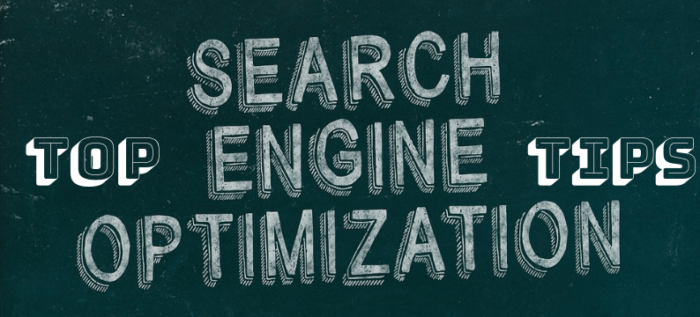
Add a Comment